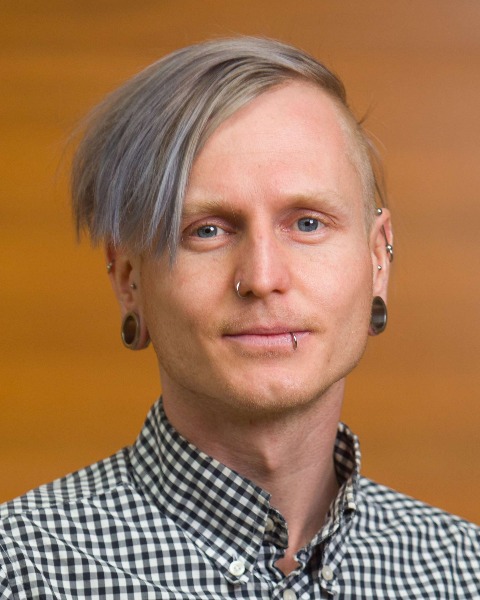Back
Contributed Talk
Session: Evolution: Selection And Adaptation 3
COS 236-4 - Within-generation selection in Coho salmon (Oncorhynchus kisutch) exposed to modified hatchery rearing environments and the wild
Thursday, August 18, 2022
10:45 AM – 11:00 AM EDT
Location: 512A

James K. Bull
PhD Student
University of Calgary
Calgary, Alberta, Canada- SR
Sean M. Rogers
University of Calgary; Bamfield Marine Sciences Centre, Canada
Presenting Author(s)
Coauthor(s)
Background/Question/Methods
Hundreds of millions of salmonids are produced annually by artificial reproduction for harvest and conservation. Abundant data indicate such fish differ from their wild-born counterparts in morphology, physiology and behaviour, and typically have greatly reduced survival and reproductive success in the wild. Such observations have led to the exploration of modified (“enriched”) rearing environments as a means to produce “more wild-like” fish in hatcheries. While more wild-like phenotypes are seen for some traits under such approaches (e.g. – certain aspects of behaviour), it is unclear to what extent observed improvements result from phenotypic plasticity or from genetic changes caused by modified selective pressures under enriched environments. Here, we report on an experiment designed to quantify selection at the genome sequence level over a single generation in Coho salmon (Oncorhynchus kisutch) reared under traditional and enriched hatchery environments, and in the adjacent wild population as a reference. We do so by performing pooled sequencing (PoolSeq) on breeding individuals at Canada’s largest hatchery (“broodstock”), their returning adult offspring who were reared under traditional and enriched hatchery environments prior to release (“returnees”), and on wild fish sampled at the same time, for each of two years.
Results/Conclusions
After mapping and quality control, we obtained ~ 100 x coverage across ~ 85 % of the assembled genome for each pool of individuals (n = 8 pools as wild fish were only available for year one, n ~ 50 individuals per pool). Using a sliding window approach, we determined regions of the genome differed across pools by FST values between ~ 0.0 and ~ 0.5. Generally, there was low genome-wide differentiation between traditionally reared and enriched returnees, and patterns of differentiation of both from wild returnees were largely concordant. Importantly, regions that differed between wild and hatchery returnees were not simply those present between their respective broodstocks, i.e. – they were apparently driven by differences in experienced selected. Comparisons of broodstock and returnees revealed that many patterns of within-generation selection were shared across groups, but that there were also group-specific differences. In addition to elucidating the patterns above, this study demonstrates the power of PoolSeq for investigating selection across the genome in species with otherwise intractably large genomes, such as Coho salmon (~ 3Gb).
Hundreds of millions of salmonids are produced annually by artificial reproduction for harvest and conservation. Abundant data indicate such fish differ from their wild-born counterparts in morphology, physiology and behaviour, and typically have greatly reduced survival and reproductive success in the wild. Such observations have led to the exploration of modified (“enriched”) rearing environments as a means to produce “more wild-like” fish in hatcheries. While more wild-like phenotypes are seen for some traits under such approaches (e.g. – certain aspects of behaviour), it is unclear to what extent observed improvements result from phenotypic plasticity or from genetic changes caused by modified selective pressures under enriched environments. Here, we report on an experiment designed to quantify selection at the genome sequence level over a single generation in Coho salmon (Oncorhynchus kisutch) reared under traditional and enriched hatchery environments, and in the adjacent wild population as a reference. We do so by performing pooled sequencing (PoolSeq) on breeding individuals at Canada’s largest hatchery (“broodstock”), their returning adult offspring who were reared under traditional and enriched hatchery environments prior to release (“returnees”), and on wild fish sampled at the same time, for each of two years.
Results/Conclusions
After mapping and quality control, we obtained ~ 100 x coverage across ~ 85 % of the assembled genome for each pool of individuals (n = 8 pools as wild fish were only available for year one, n ~ 50 individuals per pool). Using a sliding window approach, we determined regions of the genome differed across pools by FST values between ~ 0.0 and ~ 0.5. Generally, there was low genome-wide differentiation between traditionally reared and enriched returnees, and patterns of differentiation of both from wild returnees were largely concordant. Importantly, regions that differed between wild and hatchery returnees were not simply those present between their respective broodstocks, i.e. – they were apparently driven by differences in experienced selected. Comparisons of broodstock and returnees revealed that many patterns of within-generation selection were shared across groups, but that there were also group-specific differences. In addition to elucidating the patterns above, this study demonstrates the power of PoolSeq for investigating selection across the genome in species with otherwise intractably large genomes, such as Coho salmon (~ 3Gb).
